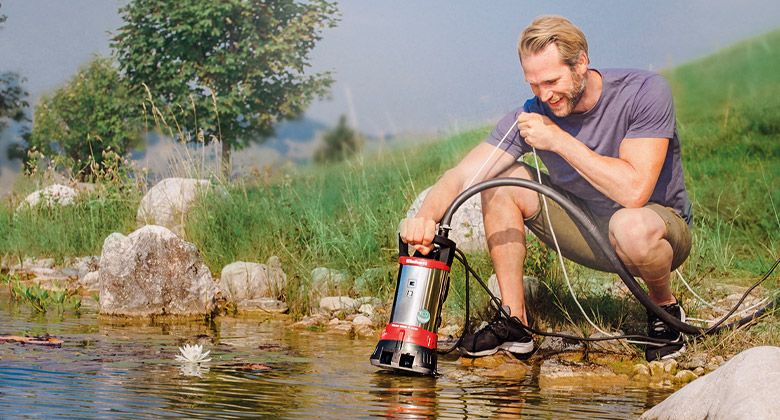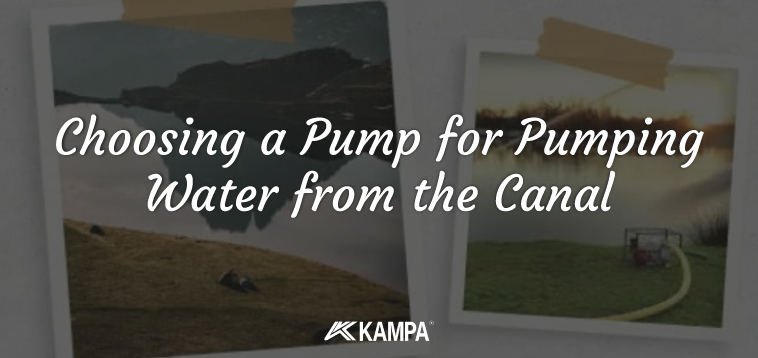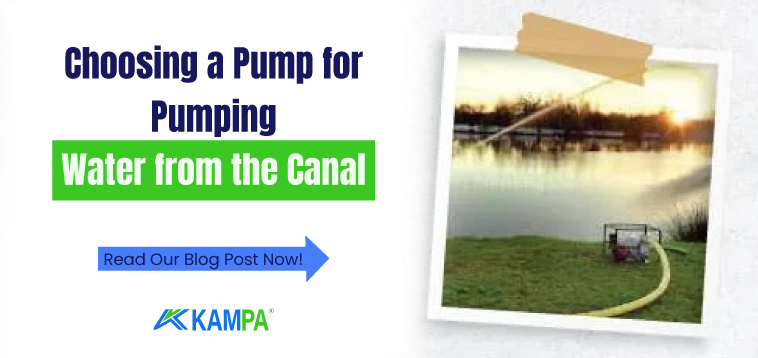Choosing a Pump for Pumping Water from the Canal
Choosing a pump to draw water from a canal can be an important need for agricultural irrigation, garden irrigation or home use. Details of water withdrawal from irrigation canal.
Table of Contents
However, choosing the appropriate pump for drawing water from the canal depends on factors such as the height of the canal, the depth of the water, the flow rate and pressure of the water. In this article, I will describe the types of pumps for extracting water from the canal and their advantages and disadvantages.

Submersible Pump for Pumping Water from Canal
A submersible pump is an electrically powered pump that is lowered into the canal. The submersible pump can draw water regardless of the height of the channel. Since it is in the water, there is no heat loss and it works silently. Submersible pump, provides high flow rate and pressure.
Disadvantages of Submersible Pump
- It will not work in case of power failure.
- Maintenance is difficult because it remains in the canal.
- It can be damaged by sand, mud or foreign objects inside the channel.
Steps to Use a Submersible Pump to Draw Water from the Canal
- Measure the depth of the trench and select a submersible pump with the appropriate power.
- Tie the pump with a nylon rope and release it into the channel. Loosen the rope a little so that it does not touch the bottom of the pump.
- Send the electric cable of the pump and the discharge pipe into the trench together with the rope.
- Connect the power cable of the pump to a suitable socket or generator.
- Route the discharge pipe of the pump to the desired location.
You can check these links for submersible pump recommendations for drawing water from the canal:

Centrifugal Pump
A centrifugal pump is an electric or motor-driven motor for drawing water from a channel that is outside the channel. The centrifugal pump draws water and sucks it from the channel and transports it to the desired location through the discharge pipe.
Centrifugal pumps are cheaper and easier to maintain than submersible pumps. Centrifugal pumps are also divided into two as open fan and closed fan (snail). Open impeller pumps are more suitable for dirty water, while closed impeller pumps are suitable for cleaner water.
Disadvantages of Centrifugal Pumps
- They can absorb water from the canal at a maximum depth of 6-8 meters.
- If the height of the canal is too high, they may find it difficult to drain the water.
- They can make air when the water level drops .
How to Use a Centrifugal Pump to Pump Water from the Canal
- Measure the depth and height of the trench and select a centrifugal pump with the appropriate power.
- Place the pump close to the canal. Make sure that the pump is no more than 6-8 meters above the water level.
- Lower the suction pipe of the pump into the trench. If the height of the duct is high, you can use a ladder or scaffolding to bring the suction pipe closer to the bottom of the duct.
- Route the discharge pipe of the pump to the desired location.
- Start the electric cable or motor of the pump properly.
You can check these links for pump centrifugal pump recommendations for drawing water from the canal:
- What is a centrifugal pump

What are the Tricks of Draining Water from a Canal?
Drawing water from the canal is a process needed in areas such as garden irrigation, agriculture and animal husbandry. The easiest and most efficient way to draw water from a canal is to use a water pump.
A water pump is a device that sucks water from the canal and transports it to the desired location. There are some points to consider when choosing a water pump:
- The power of the water pump must be suitable for the level of water in the channel and the height to be transported. A pump with insufficient power cannot suck the water sufficiently or carry it at the desired pressure.
- The suction pipe of the water pump should not touch the bottom of the channel and should be close to the surface. Thus, foreign materials such as mud, sand, stones at the bottom of the channel are prevented from blocking or damaging the pump.
- A filter must be installed at the end of the suction pipe of the water pump. The filter retains impurities in the water in the channel and ensures a longer life of the pump.
- The discharge pipe of the water pump should be extended to the desired length and sealing should be ensured at the pipe joints. If the discharge pipe is too long, it reduces the performance of the pump and causes energy loss.
- The electrical power required to operate the water pump must be supplied safely. The electric cable must not come into contact with water and its insulation must not deteriorate. The electrical panel, fuse and grounding system must also be properly installed.
We can summarize the tricks of water extraction from the canal in this way. You need to be careful and safe when doing this process. The quality and quantity of water in the canal can also change seasonally. It is therefore also important to have the canal water tested and, if necessary, treated before using it.

Does Channel Width Affect Pump Performance?
Channel width is one of the factors affecting the performance of the pump. As the channel width increases, the flow rate of the pump also increases. However, it should not be forgotten that the channel width is not the only factor affecting the performance of the pump. Factors such as the material of the channel, flow rate and slope of the channel also affect the performance of the pump.
Conclusion
The answer to the question of which pump should be used to draw water from the canal depends on the characteristics of the canal and the water. A submersible pump can draw water regardless of the height of the canal, but you may experience power outages or maintenance problems.
A centrifugal pump can draw water from the canal at a maximum depth of 6-8 meters, but it is cheaper and easier to maintain. Whichever pump you choose, remember to take the necessary precautions to use it safely and efficiently.
We have come to the end of the article on methods of drawing water from the canal. I hope it was useful. If you want to learn more about which pump should be used as a pump to draw water from the canal, you can take a look at the links I have given above.
Click here for prices of submersible pumps for drawing water from the canal.

